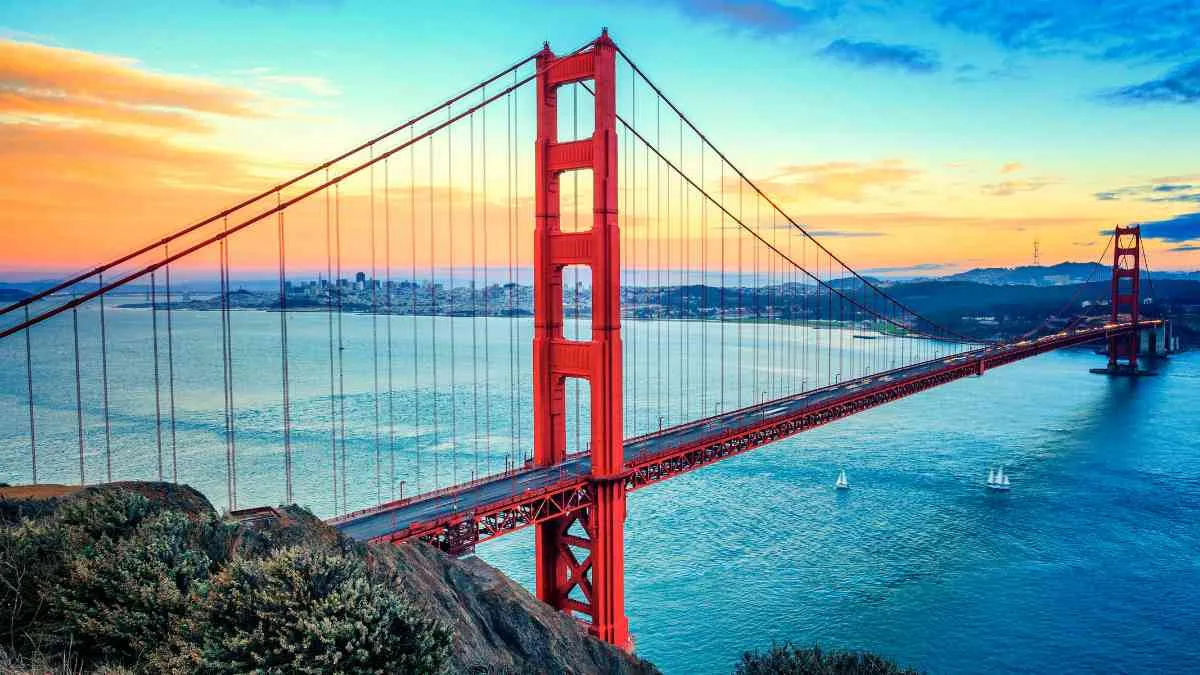The Golden Gate Bridge is one of the most famous bridges in the world, and people love to take pictures of it. It's known for its cool design and its bright orange-red color. This bridge goes across the Golden Gate Strait, which is a narrow water passage. It connects the city of San Francisco to a place called Marin County in California.
When it was finished in 1937, building this bridge was an amazing feat of engineering. For many years, it was the longest hanging bridge in the world. Besides being useful for travel, it has become a symbol for San Francisco and for American smarts. The Golden Gate Bridge continues to draw millions of visitors. It's a proud landmark in the United States because of its big ideas, its important history, and how it has touched culture.

Check Out: Eiffel Tower: Check Who Made it, Interesting Facts and More
Key Details
| Feature | Detail |
| Location | San Francisco, California, USA |
| Connects | San Francisco and Marin County |
| Construction Started | January 5, 1933 |
| Opened to the Public | May 27, 1937 |
| Total Length | 8,981 feet (2,737 meters) |
| Main Span Length | 4,200 feet (1,280 meters) |
| Height of Towers | 746 feet (227 meters) above water |
| Clearance Below | 220 feet (67 meters) |
| Color | International Orange |
| Designer | Joseph Strauss (Chief Engineer) |
| Architectural Consultant | Irving Morrow |
| Type | Suspension Bridge |
| Toll (Southbound Only) | Varies by vehicle and payment method |
| Daily Traffic | Over 100,000 vehicles |
Significance of the Golden Gate Bridge
The Golden Gate Bridge completely changed how people traveled in the Bay Area. Before it, folks had to use slow boats. The bridge made a fast way to get across for cars and people. It quickly became a super important part of California's roads and transportation system.
But the bridge is more than just a way to cross water. It has become a huge cultural and artistic symbol. You can see it in tons of movies, pictures, and artwork. It shows that people can be clever and determined enough to overcome big natural problems (like the wide strait) and economic tough times.
History and Construction
Construction of the Golden Gate Bridge began in January 1933, which is a period marked by the Great Depression. Despite these challenging economic times, the project was completed in April 1937 in just four years.
Designed by engineer Joseph Strauss and Architect Irving Mao, the bridge provided thousands of jobs, providing significant employment during widespread difficulty. Remandable, it was terminated under the budget. On its completion, it stood as the world's longest suspension bridge, spanning a distance of 4,200 feet in its main period and 746 feet above water, a true miracle of engineering for its era.
Interesting Facts
Color choice: The unique orange color of the bridge was initially chosen to increase visibility in the frequent fog of San Francisco and later became a defined characteristic.
Engineering Marvel: The bridge was designed to withstand strong ocean streams, winds, and earthquakes.
Tourist attraction: Today, more than 10 million people visit the Golden Gate Bridge every year.
Toll system: It was once a two-way toll bridge, but now only collects tolls for South-East traffic entering San Francisco.
Art and Culture: Painted in films like Wargames, Rise of the Planet of the Apes, and The Rock, The Bridge is a popular cinematic icon.
The Golden Gate Bridge not only stands as a functional piece of infrastructure but also as a permanent tribute to human ambition, creativity, and flexibility.
